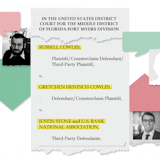Jamie Azar left a rehab hospital in Tennessee this week with the help of a walker after spending the entire month of August in the ICU and on a ventilator. She had received a shot of the Johnson & Johnson vaccine in mid-July but tested positive for the coronavirus within 11 days and nearly died.
Now Azar, who earns about $36,000 a year as the director of a preschool at a Baptist church in Georgia, is facing thousands of dollars in medical expenses that she can't afford.
"I'm very thankful to be home. I am still weak. And I'm just waiting for the bills to come in to know what to do with them," she said Wednesday, after returning home.
In 2020, as the pandemic took hold, U.S. health insurance companies declared they would cover 100 percent of the costs for COVID treatment, waiving co-pays and expensive deductibles for hospital stays that frequently range into the hundreds of thousands of dollars.
But this year, most insurers have reinstated co-pays and deductibles for COVID patients, in many cases even before vaccines became widely available. The companies imposed the costs as industry profits remained strong or grew in 2020, with insurers paying out less to cover elective procedures that hospitals suspended during the crisis.
Now the financial burden of COVID is falling unevenly on patients across the country, varying widely by health-care plan and geography, according to a survey of the two largest health plans in every state by the nonprofit and nonpartisan Kaiser Family Foundation.
If you're fortunate enough to live in Vermont or New Mexico, for instance, state mandates require insurance companies to cover 100 percent of treatment. But most Americans with COVID are now exposed to the uncertainty, confusion and expense of business-as-usual medical billing and insurance practices — joining those with cancer, diabetes and other serious, costly illnesses.
A widow with no children, Azar, 57, is part of the unlucky majority. Her experience is a sign of what to expect if COVID, as most scientists fear, becomes endemic: a permanent, regular health threat.



